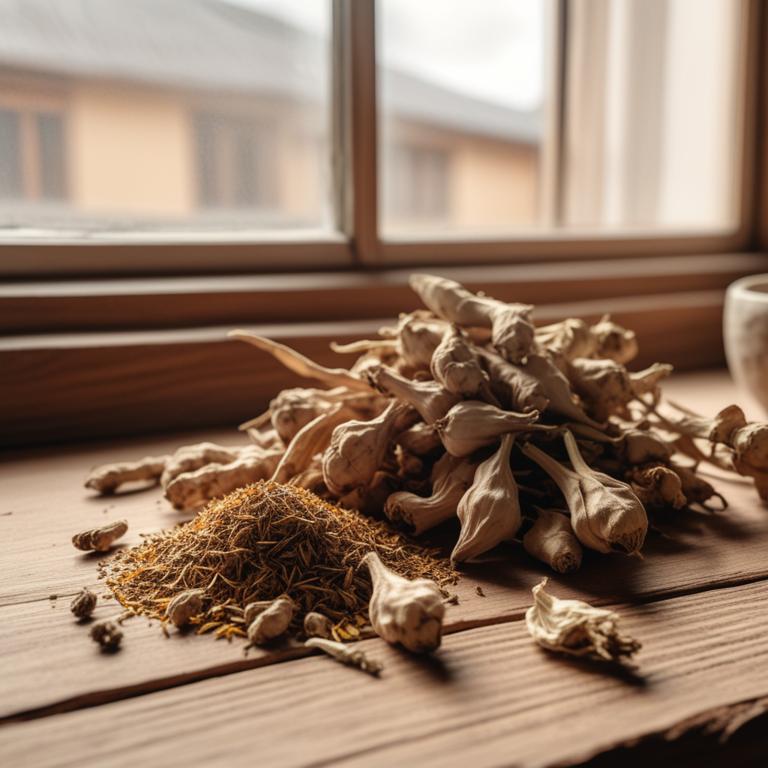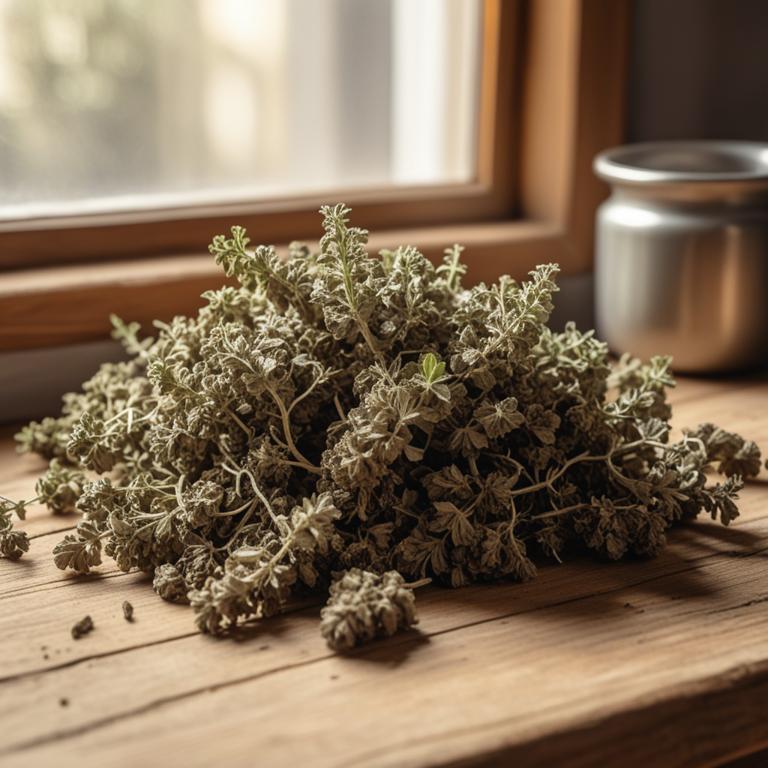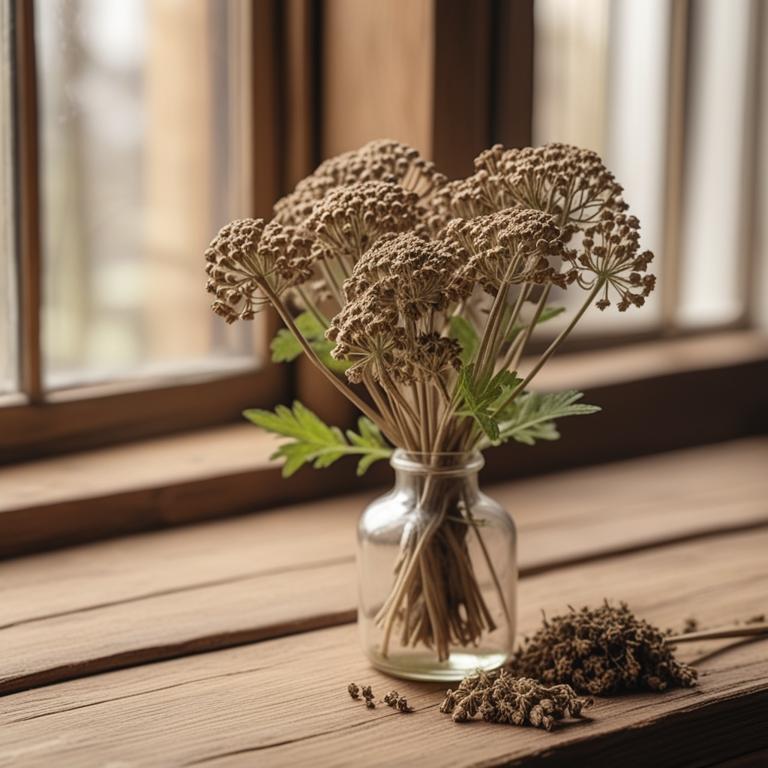Updated: Nov 30, 2024
7 Herbal Tinctures For Nausea

Herbal tinctures can be a great way to relieve nausea, and they work by using natural ingredients to calm the stomach.
For example, Zingiber officinale, also known as ginger, has been used for centuries to help with nausea and digestive issues. It contains compounds that slow down digestion and reduce inflammation, making it a popular remedy for morning sickness and motion sickness. Another herb that can help with nausea is Glycyrrhiza glabra, or licorice root. It has anti-inflammatory properties that can help soothe the stomach and reduce nausea. Some studies have even shown that licorice root can be as effective as medication in reducing nausea and vomiting.
Ginkgo biloba is another herb that can help with nausea, particularly when it's caused by stress or anxiety. It contains compounds that can help calm the nervous system and reduce feelings of nausea. By taking a ginkgo biloba tincture, you can help regulate your digestive system and reduce the symptoms of nausea. Using herbal tinctures to relieve nausea can have several benefits for your life. For one, they can help you avoid the side effects of medication, such as drowsiness or stomach cramps. They can also be more convenient than taking medication, as they can be taken in a small amount of water and on the go.
Additionally, herbal tinctures can be a natural way to regulate your digestive system and reduce symptoms of nausea, making them a great option for people who want to avoid medication or try a more holistic approach to health.
This article explains in detail what are the best herbal teas for nausea and wh.
Also, you may be interested in...
Today Free Bonus!
The Ultimate Herb Drying Checklist
(For Long-Lasting Powerful Medicinal Effect)
How to easily dry herbs that don't mold and that keep their strong medicinal power for more than 1 year.
Table of Contents
1. Zingiber officinale

Zingiber officinale tinctures contains a compound called gingerol, which is responsible for its anti-inflammatory properties.
Gingerol helps to reduce inflammation in the digestive tract, which can cause nausea. The volatile oils present in the tincture, particularly zingiberene, have a direct effect on the stomach and intestines, helping to regulate their function and alleviate nausea. The bioactive constituents in Zingiber officinale tinctures, such as shogaol and paradol, also have a calming effect on the digestive system, which can help to reduce nausea.
By regulating digestive function and reducing inflammation, Zingiber officinale tinctures can provide relief from nausea.
- Gather 1 cup of Zingiber officinale roots, 2 cups of vodka, and a clean glass jar.
- Chop the roots into small pieces and place them in the glass jar.
- Pour the vodka over the roots, making sure they are fully covered.
- Seal the jar and let it sit in a cool, dark place for 2-3 weeks, shaking the jar every day.
- Strain the liquid and discard the roots. Store the tincture in a dark glass bottle and use 15-30 drops as needed for nausea.
2. Glycyrrhiza glabra
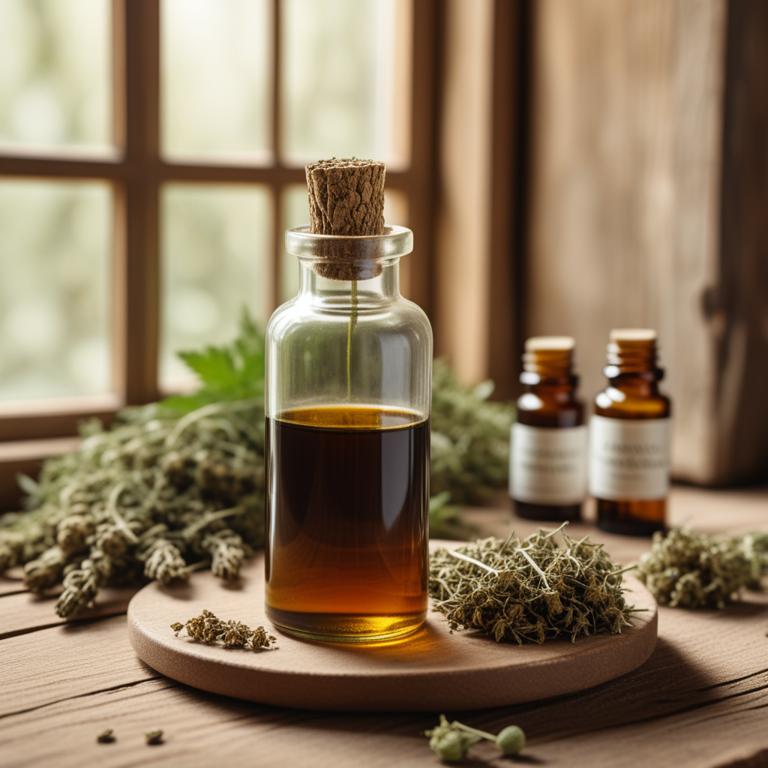
Glycyrrhiza glabra tinctures contains glycyrrhizin, a triterpenoid saponin, and other compounds like flavonoids and phenolic acids.
These bioactive constituents have anti-inflammatory and antispasmodic properties, which help to relax the stomach muscles and reduce nausea. Glycyrrhizin also has a soothing effect on the digestive system, reducing inflammation and irritation that can contribute to nausea. The flavonoids and phenolic acids in Glycyrrhiza glabra tinctures have antioxidant properties, which help to protect the stomach lining from damage and further reduce nausea.
By reducing inflammation, relaxing stomach muscles, and protecting the stomach lining, Glycyrrhiza glabra tinctures can help alleviate nausea and provide relief from digestive discomfort.
- Gather materials: 1 cup of dried Glycyrrhiza glabra root, 2 cups of vodka (95% alcohol), a clean glass jar with a lid.
- Add 1 cup of dried Glycyrrhiza glabra root to the glass jar.
- Pour 2 cups of vodka over the root, making sure the root is completely covered.
- Close the jar and store it in a cool, dark place for 2 weeks, shaking the jar every day.
- Strain the liquid through a cheesecloth or a coffee filter into another clean glass bottle. Discard the solids.
3. Ginkgo biloba
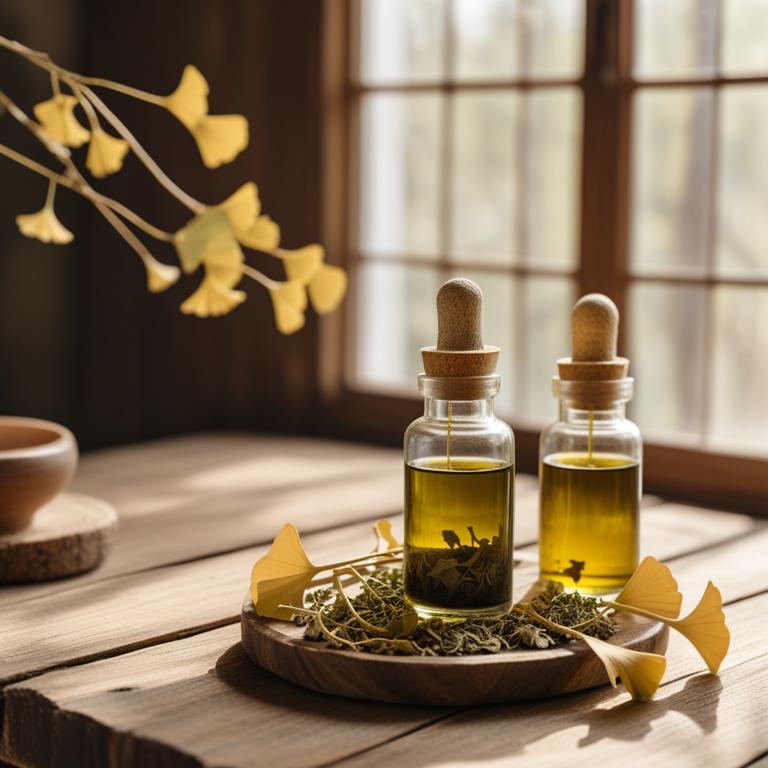
Ginkgo biloba tinctures contains flavonoids and terpenoids, which are the active constituents responsible for its medicinal properties.
Flavonoids like quercetin and kaempferol have anti-inflammatory and antioxidant effects, while terpenoids like ginkgolides and bilobalide help improve blood flow to the digestive system. This increased blood flow can help alleviate nausea and vomiting by reducing inflammation and promoting healthy digestion. The flavonoids and terpenoids in Ginkgo biloba tinctures also have a direct effect on the stomach, where they can help regulate the digestive process and reduce symptoms of nausea.
By regulating blood flow and reducing inflammation in the digestive system, Ginkgo biloba tinctures can help alleviate nausea and promote a sense of well-being.
- Gather 1 cup of dried Ginkgo biloba leaves and 2 cups of 80% vodka.
- Combine the Ginkgo biloba leaves and vodka in a clean glass jar.
- Steep the mixture for 2 weeks, shaking the jar every day.
- Strain the mixture through a cheesecloth or a coffee filter into another jar.
- Store the tincture in a cool, dark place and take 20 drops, 2-3 times a day for nausea.
4. Cinchona officinalis
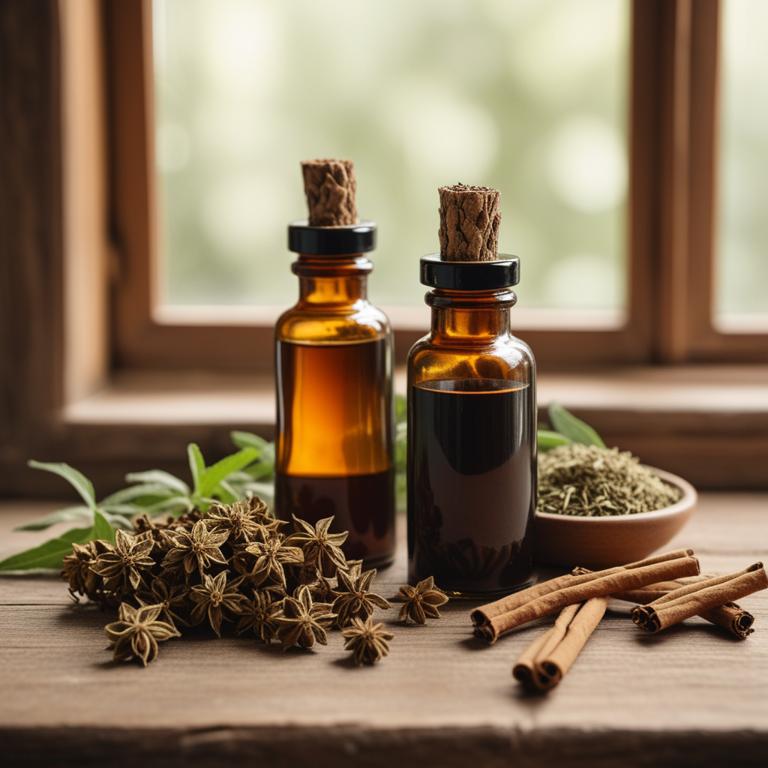
Cinchona officinalis tinctures contains compounds like quinine and alkaloids, which are responsible for its medicinal properties.
The quinine in Cinchona officinalis tinctures helps to stimulate digestion and relieve nausea by increasing the flow of stomach acid and enzymes. The alkaloids, particularly quinidine and quinidine, have a direct effect on the stomach muscles, helping to calm and soothe the digestive system. Quinine also has a natural anti-inflammatory effect, which can help to reduce swelling and irritation in the digestive tract, further alleviating nausea.
By stimulating digestion and reducing inflammation, Cinchona officinalis tinctures can help to alleviate nausea and promote a sense of well-being.
- Gather 1 cup of fresh Cinchona officinalis leaves and 2 cups of 80% vodka in a clean glass jar.
- Add the Cinchona leaves to the jar and pour the vodka over them, making sure the leaves are fully covered.
- Seal the jar and let it sit in a cool, dark place for 2-3 weeks, shaking the jar daily.
- After 2-3 weeks, strain the mixture through a cheesecloth or a coffee filter into another clean glass jar, discarding the solids.
- Transfer the tincture to dark glass bottles and store them in a cool, dark place. Use 20-30 drops of the tincture in water when needed to help relieve nausea.
5. Foeniculum vulgare
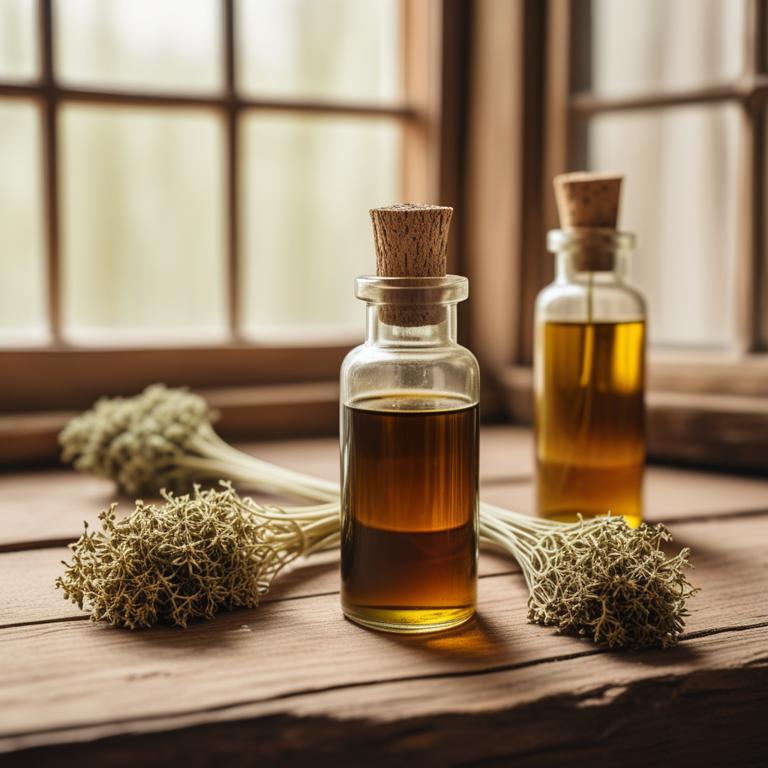
Foeniculum vulgare tinctures contains a compound called anethole, a bioactive constituent that has anti-inflammatory properties.
Anethole helps to relax the stomach muscles and improve digestion, reducing nausea and discomfort. Foeniculum vulgare tinctures also contain furanocoumarins, which have a calming effect on the nervous system, reducing anxiety and stress that can contribute to nausea. The volatile oils in Foeniculum vulgare tinctures, such as limonene and beta-pinene, have antispasmodic properties that help to soothe the stomach and reduce cramps.
These properties work together to help alleviate nausea and promote a sense of calm.
- Gather 250ml of 80% vodka or high-proof spirit and 20g of dried Foeniculum vulgare (aniseed roots or seeds).
- Combine the dried Foeniculum vulgare with 250ml of 80% vodka in a clean glass jar, making sure the plant material is fully covered by the liquid.
- Seal the jar and store it in a cool, dark place for 2-3 weeks, shaking the jar every day or two.
- After the 2-3 weeks, strain the liquid through a cheesecloth or a coffee filter into another clean glass jar, discarding the plant material.
- Label the jar and store the tincture in a cool, dark place. Use 5-10 drops of the tincture in a cup of water to help with nausea.
6. Angelica archangelica
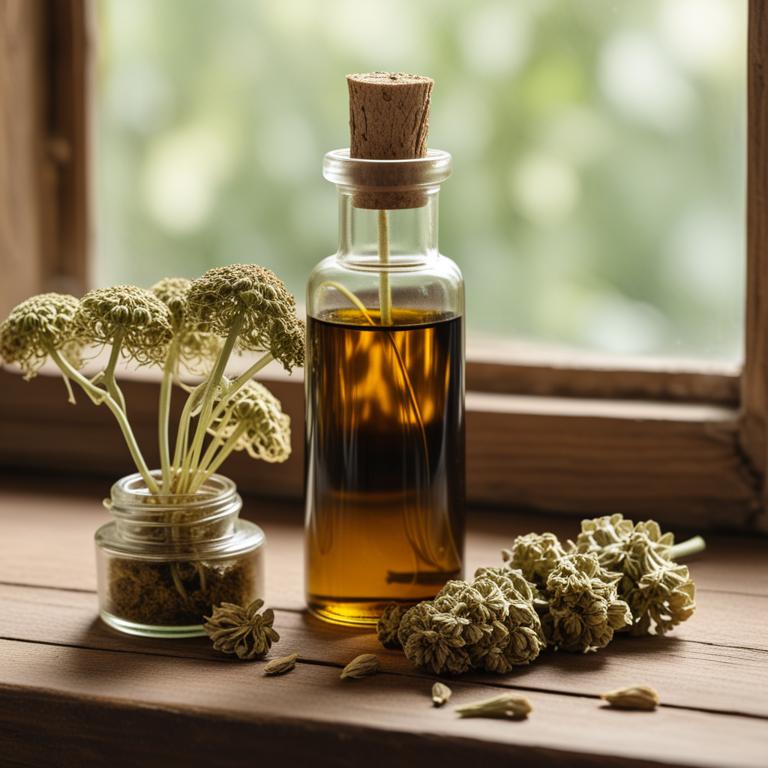
Angelica archangelica tinctures contains a variety of bioactive constituents, including volatile oils, flavonoids, and sesquiterpenes.
The volatile oils in Angelica archangelica, such as borneol and bornyl acetate, have anti-inflammatory properties that help to soothe the stomach and reduce nausea. The flavonoids, particularly angelicin, have antioxidant and anti-inflammatory effects that can help to calm the digestive system and alleviate symptoms of nausea. The sesquiterpenes, including angelan and isoangelicin, have anti-spasmodic properties that can help to relax the muscles in the stomach and reduce cramping.
By combining these properties, Angelica archangelica tinctures can help to provide relief from nausea and promote a sense of calm in the digestive system.
- Gather 1 cup of fresh Angelica archangelica roots and leaves. Clean and chop them finely.
- Fill a clean glass jar with 1/2 cup of 80% vodka or ethanol. Add the chopped Angelica archangelica.
- Cover the jar and let it sit in a cool, dark place for 2-3 weeks. Shake the jar every day.
- Strain the liquid through a cheesecloth or a coffee filter into another clean glass jar. Discard the solids.
- Store the tincture in a cool, dark place. Take 10-20 drops, 2-3 times a day, as needed for nausea relief.
7. Piper methysticum

Piper methysticum tinctures contains the bioactive constituents kavalactones, specifically kavain, desmethoxyyangonin, and yangonin.
These compounds have anti-inflammatory and antispasmodic properties, which can help relieve nausea by reducing muscle tension and inflammation in the stomach. The kavalactones also have a sedative effect on the nervous system, which can help calm the stomach and reduce feelings of queasiness. Additionally, the tincture's ability to relax the smooth muscle in the digestive tract can help move food through the digestive system more efficiently, reducing nausea and discomfort.
By reducing inflammation, relaxing muscles, and calming the nervous system, Piper methysticum tinctures can help alleviate nausea and promote a sense of well-being.
- Gather 1 cup of dried Piper methysticum leaves and 2 cups of 80% ethanol in a clean glass jar.
- Combine the dried leaves and ethanol in the jar. Stir well to coat the leaves.
- Seal the jar and let it sit in a cool, dark place for 2-3 weeks. Shake the jar daily.
- Strain the mixture through a cheesecloth into another clean glass jar. Discard the solids.
- Transfer the tincture to small glass bottles and store them in a cool, dark place. Use 20-30 drops of the tincture in water as needed for nausea.
FAQ
Can drinking herbal tea prevent nausea from forming?
Drinking herbal tea may help prevent nausea.
Peppermint and ginger teas are popular choices for this reason. The soothing properties in these teas can calm the stomach and reduce nausea.
Some people also find that herbal teas can ease morning sickness during pregnancy, but its effectiveness varies from person to person.
Is it safe to consume herbal teas for nausea every day?
Consuming herbal teas for nausea daily can be safe, but it depends on the type of tea.
Some herbs like ginger and peppermint are generally considered safe and may even be beneficial. However, others like chamomile and licorice root can cause issues if taken excessively.
It's essential to check the ingredients and follow the recommended amounts.
How long does it take for herbal teas to show results in nausea?
Herbal teas can help with nausea, but how long they take to work varies.
Some people feel better in 10-30 minutes after drinking, while others may need to try different teas or drink them more often.
It's also possible that it may take a few hours for the tea to start working.
Related Articles
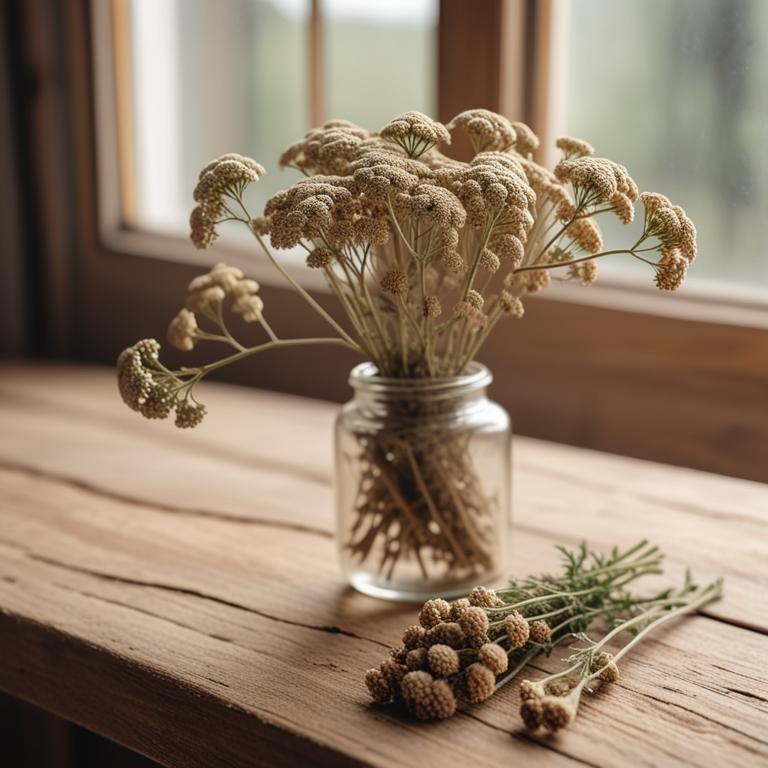
Herbal Solutions for Eye Strain: Causes, Prevention, and Cure
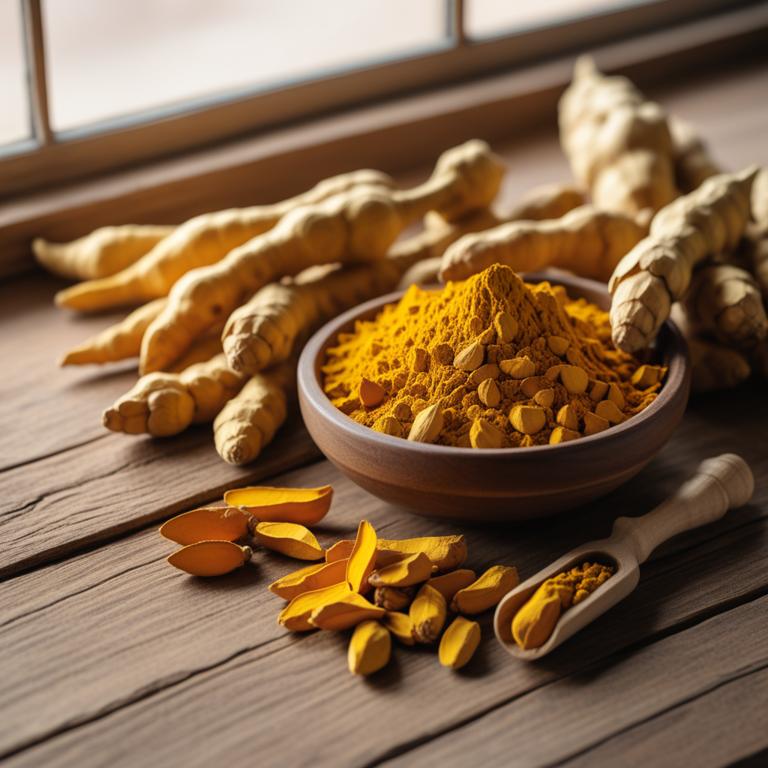
The Role of Medicinal Herbs and Herbal Preparations in Enhancing Postoperative Recovery
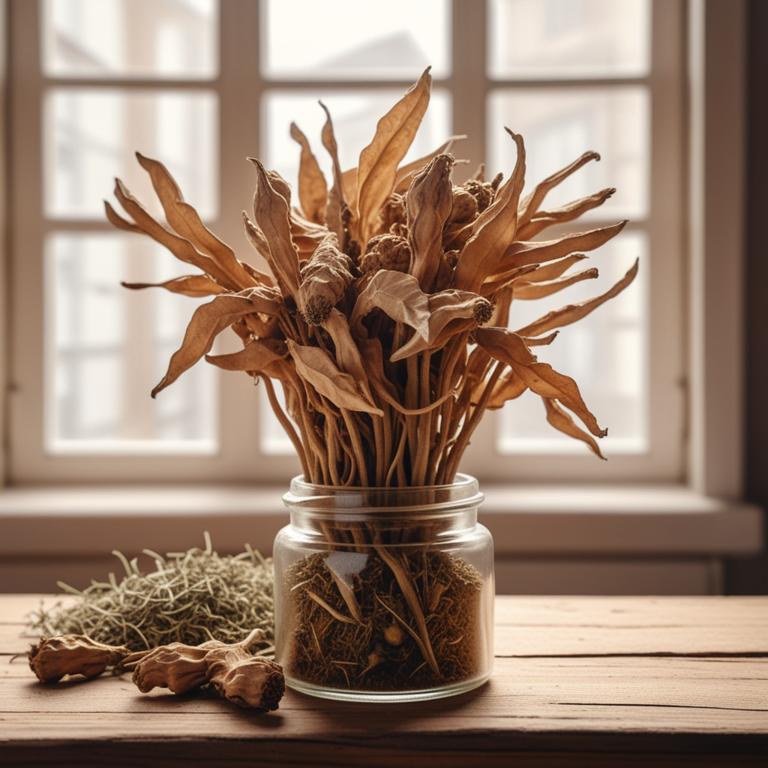
Motion Sickness Causes and Medicinal Herbs for Relief
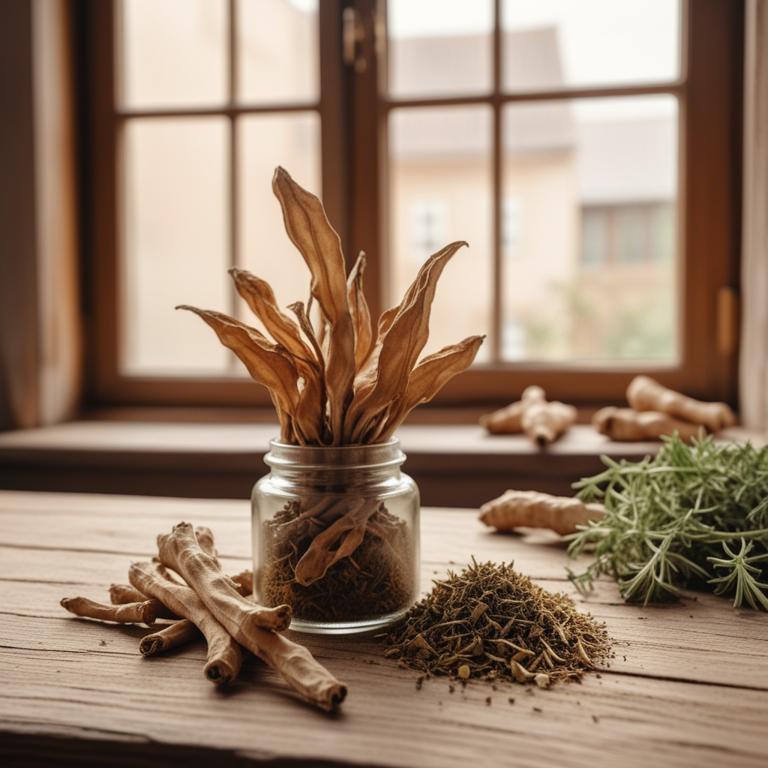
Hangover: The Science Behind the Causes and Medicinal Herbal Preparations
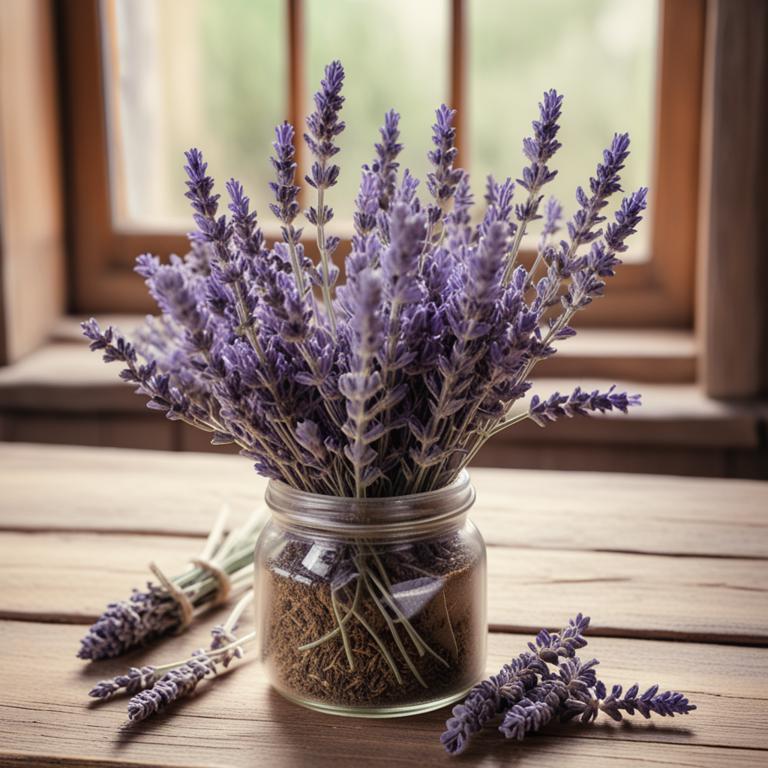
Anxiety Relief: Exploring Medicinal Herbs and Natural Preparations




